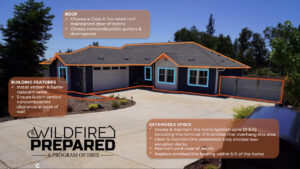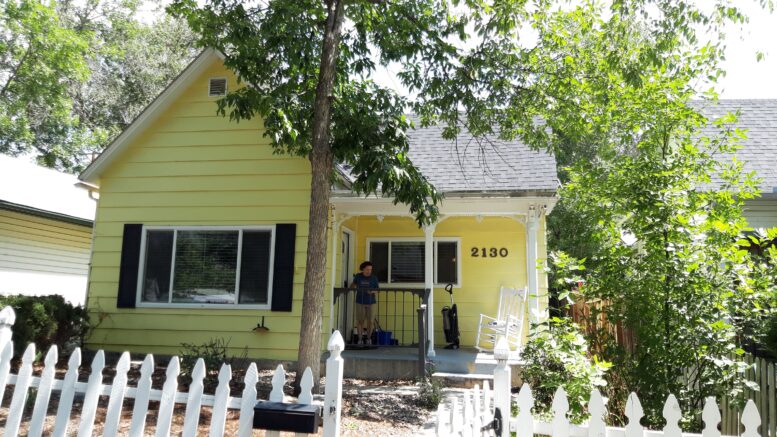While legislators scramble to determine if land-use reform or regulatory overhauls can alleviate the affordable-housing crisis, Colorado Insurance Commissioner Michael Conway is examining another potential pathway: Changes that could affect the homeowners’ insurance market.
Conway recently oversaw three public forums that examined why homeowners’ insurance policy costs are up some 50% over the past four years, why insurers are selling fewer policies in Colorado and what kinds of actions the state could take to reverse the trends. The insurance commissioner offered several broad ideas at the end of the trio of stakeholders’ meetings without charting a specific path forward but said that he would continue looking for solutions.
The online forums marked a new tact to trying to bring down the soaring costs of Colorado homes, whose values spiked on average more than 40% between 2021 and 2023, helping to exacerbate statewide labor shortages because some workers can’t afford to live near their jobs. Gov. Jared Polis and legislators have debated whether a shortage of housing stock, an out-of-control market or other factors have led to the state’s rising unaffordability, but Conway’s efforts are the first that seem to peg problems directly to insurance.
“We are in a similar spot, candidly, today with our homeowners’ insurance market as we were with our health insurance marketplace before,” Conway said during a Nov. 13 forum, noting that he spent 90% of Polis’ first term from 2019-22 trying to address health-insurance affordability. “We have to come up with new ideas and we have to come up with new solutions to these problems, because what is happening right now isn’t working.”
Why homeowners’ insurance has become problematic
The rise in costly, home-destroying disasters, both in Colorado and nationwide, is the leading reason for the premium cost hikes, Conway and insurance-industry officials agree.

Colorado Insurance Commissioner Michael Conway
Natural disasters in Colorado rose 275% over the past 20 years, leading Colorado insurers to lose an average of 13% per year versus revenue from premiums over the past decade, said Carole Walker, executive director of the Rocky Mountain Insurance Information Association. Spurred by hailstorms and destructive wildfires such as the 2021 Marshall Fire, that’s caused insurance losses in the state to be the third-worst total in the country over the past 10 years, behind only Louisiana and Texas.
And it’s piled onto national insurance losses from disasters that caused $275 billion in damage from 2020-22 — the highest three-year total in history, noted Kelly Campbell of Fulcrum Solutions, a representative for the American Casualty & Property Insurance Association. Hurricanes in Florida and tornados in Kansas affect Colorado premiums because national insurance companies pay for reinsurance policies that cover their greatest losses, and those policy costs soar with as losses and rebuilding bills rise.
These rising costs can be too much for new homeowners to afford, and Conway said at a Sept. 15 Colorado Healthcare Strategy & Management event that some potential condominium buyers have walked away from sales because insurance costs pushed the deal over the edge. But the increasing risk of policies becoming money-losers also has led to insurers limiting how many policies they will sell locally, which in turn limits home ownership mobility because the vast majority of sales require proof of insurance to close on a deal.
Colorado insurers losing money
Colorado property insurers lost an average of $1.29 for each dollar they made in revenue in 2018, Conway noted, and it’s likely that with administrative costs factored in, they haven’t made a profit in any year since then. A recent survey of firms offering homeowners’ insurance found that 76% are writing fewer policies today than they did five years ago, and by the third quarter of this year, the total number of policies written in Colorado fell flat even as the population grows, he said.
As such, Conway is examining two potential paths under which the state could use its resources to try to bring down the cost of premiums and potentially increase the number of policies being written. One appears to have the support of insurers, while the other does not.
The first path is an area in which the state already has begun to dabble — offering incentives for mitigation of wildfire and hail-damage risks on or around homes. Were there to be an increased statewide emphasis on mitigation that includes adding resources at the community and individual property levels, that increased predictability that could be reflected in premiums, Campbell wrote to Conway in an Oct. 2 letter.
Potential mitigation grants
Other states have invested significantly in helping homeowners to defend against natural disasters, Conway noted. Hurricane-riddled Louisiana offers grants of as much as $10,000 per home to prepare them to withstand winds up to 150 miles per hour, and Alabama offers both similar-sized grants and tax deductions of as much as $3,000 to retrofit homes to fend off wind and flood damage.
Ian Giammanco — managing director of standards and data analytics for the Insurance Institute for Business & Home Safety, which studies structural protection — noted mitigation can cost anything from thousands of dollars in landscaping to a week of do-it-yourself improvements. By doing things such as adding hail-resistant roofing or creating a five-foot zone around a home that is free of ignition fuels like low-hanging branches, homeowners can lower the risk of natural-disaster damage significantly.

A slide from the Insurance Institute for Business & Home Safety, shown during an Oct. 20 public forum, explains a variety of ways that homeowners can mitigate the chances of fire damage affecting their property.
Conway emphasized during the Oct. 20 forum at which Giammanco spoke that he believes that change will come only with a “package of solutions” that includes not just mitigation grants but the addition of capital into the state for reinsurance of insurance carriers. And it’s the latter idea that has some insurers concerned.
Parametric insurance
One of Conway’s ideas is to have a reinsurance specialist or the state itself sell parametric insurance, a less-used product that offers set payout amounts quickly, triggered not by extensive evaluation of property losses but just by confirmation of disasters. Such insurance could be sold to local governments and offer defined amounts to displaced residents to help them find temporary shelter or cover initial losses.
Insurance companies could choose to participate in the program and use the money to offset their losses during a disaster event if they were to agree to reduce premiums or offer more policies in the state, Conway suggested at his final forum on Nov. 13. While it would take work to develop specifics, he would hope to complement the existing insurance options in this state rather than compete against the private market with the new offering.
“I do think there are opportunities to step up talks with the industry in the future about ensuring premium discounts,” Conway said. “But I don’t think the time is right to be mandating premium discounts, as I don’t know how the market will respond.”
Campbell, however, said that she worries that such a plan could backfire and hurt availability and affordability of policies, particularly if it required insurers to limit their ability to underwrite risk in certain geographic areas in order to offer more and cheaper policies there. Instead, she suggested legislators should consider two changes to existing law that could bring certainty to the market.
Insurers suggest other homeowners’ insurance fixes
One, which has been discussed as a potential bill by the interim Wildfire Matters Review Committee, would establish streamlined and pre-planned large-scale debris-removal programs that could lead to quicker clearing of disaster debris and more efficient home repairs. Campbell noted that controversy around contracting delayed the start of debris removal from the Marshall Fire until nine months after the conflagration, and that forced insurers to cover nearly an extra year of rent costs for temporary living expenses, sometimes at inflated prices.
Also, she suggested, Colorado should revisit its requirements that insurers cover two to three years of additional living expenses for displaced residents and instead permit dollar caps on these expenses, with extensions for circumstances outside their control. The rising costs of such expenses and slowing of the rebuilding process for disaster-damaged homes has led to increases in premiums to cover both costs, and changes that occur in conjunction with streamlined debris removal should bring them down, she said.
“The parametric product, while it provides some reimbursement, doesn’t help reduce that long-tail risk,” Campbell said in an interview.
Conway on Nov. 13 didn’t set a time frame for taking next steps. Instead, he said that he and Colorado Division of Insurance leaders will continue to have meetings and hold conversations as they analyze potential solutions.
